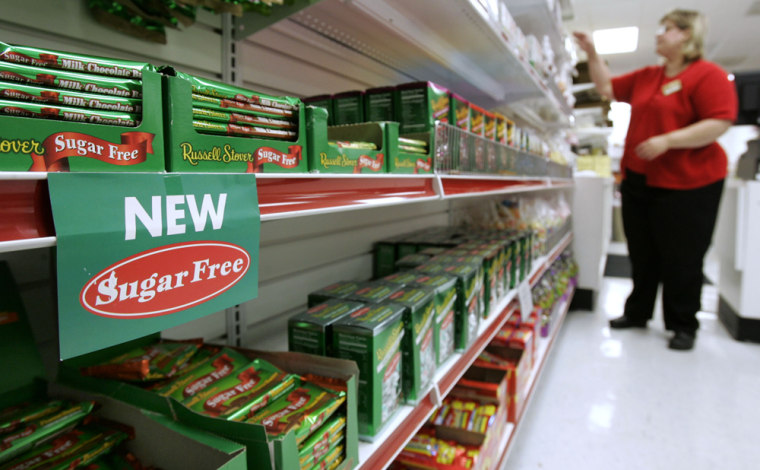Kathleen Connors isn't getting rid of her sweet tooth, but she is trying to be smarter about it.
At a Russell Stover Candies shop in suburban Kansas City recently, the Chicago resident looked over the display of sugar-free candy, including peanut butter cups and licorice. She snatched up a bag of sugar-free toffee squares to try them out.
"I'm trying to diet and yet enjoy myself," said Connors, 38.
A recent study says U.S. sales of low-sugar and low-fat candies quadrupled between 2000 and 2004.
Last year, consumers bought an estimated $495 million in diet candy, compared with $118 million four years earlier, said the report by Packaged Facts, a division of Rockville, Md.-based MarketResearch.com.
While the growth slowed over the past year as the low-carbohydrate diet craze cooled off, experts said they expect diet candy to remain a key piece of the $26 billion industry.
"People, adults and kids, are getting heavier, and there are well-publicized efforts to crack down on junk food advertising and availability, particularly in schools," said Don Montuori, an editor of the study. "In this climate, as a marketer you can make a stronger case for a sweet that is `low' in something better than a sweet that is full-bore caloric and fattening."
Also, Montuori said, companies are developing better artificial sweeteners and sweetener blends that make diet products tastier and open the door to diet versions of popular types of candy.
"It's a very untapped market and as we see innovations in that market we're going to see more interest as well," said Susan Fussell, a spokeswoman for the National Confectioners Association. She added that the overall candy market has grown only 1 percent to 2 percent per year.
Among the companies that have done the best in the diet arena is Kansas City-based Russell Stover, which had $102.4 million in sales during the first four months of the year, or 37 percent of the overall market. Russell Stover has seen the biggest sales increase in diet candy — $85.7 million — since 2000.
Hershey Foods came in second during that period at $39.9 million, or 14.4 percent of the market, overtaking Atkins Nutritionals, which has been hurt by the slumping popularity of its namesake diet, at $33.5 million, or 12.1 percent.
Tom Ward, president and chief operating officer of Russell Stover, said the company has been successful because it came into the market when no other national brands were making candy aimed at diabetic and diet-conscious consumers.
"When we got in there with our name, and with great taste and with chocolate, it expanded the sugar-free category," Ward said, adding that sugar-free and reduced-carb candy makes up around a quarter of sales.
